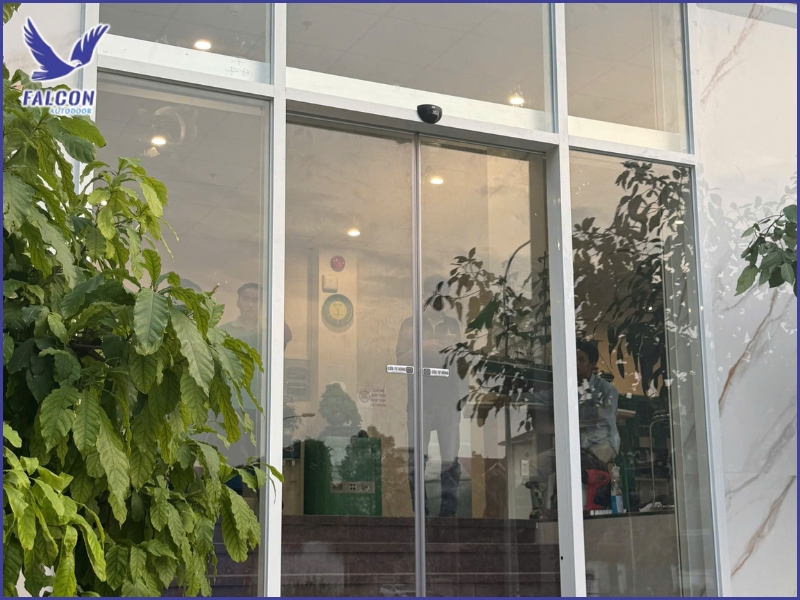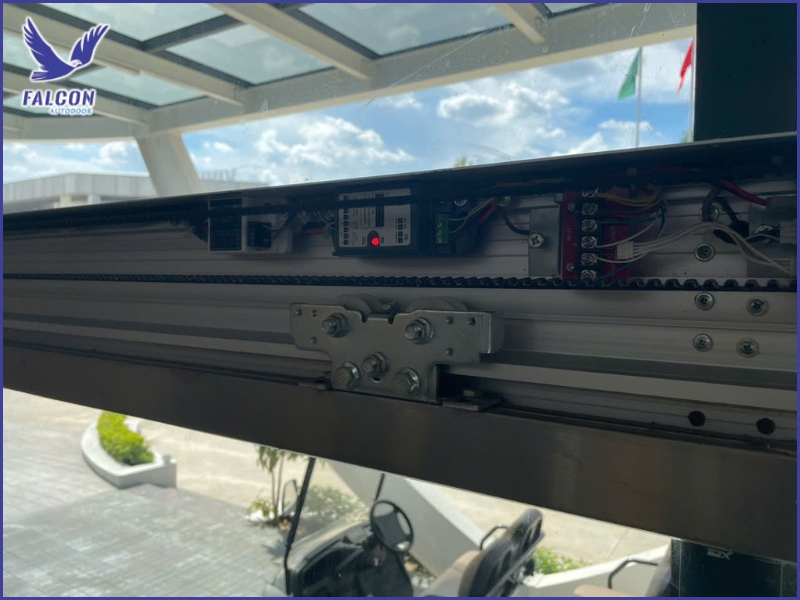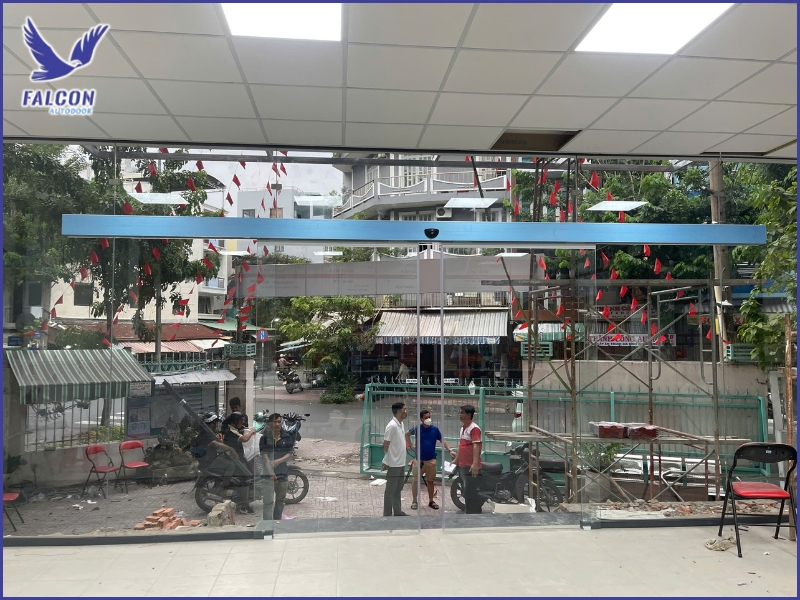Proper automatic door maintenance to extend service life
In modern buildings, automatic doors deliver convenience while uplifting overall aesthetics. In this guide, Thuy Linh Long shares simple, practical maintenance steps you can apply to keep your doors durable, stable in operation, and safe for long-term use without disrupting daily traffic.
1. Why periodic maintenance is essential for automatic doors
Regular maintenance doesn’t just keep automatic doors running smoothly it prevents costly failures later. Many owners act only after faults appear, but routine inspections, cleaning, and adjustments preserve components, extend lifespan, and ensure reliable safety performance day after day.
1.1 Keep operation smooth and consistent
Dust and friction accumulate over time and make rollers, tracks, and sensors less responsive. Scheduled care removes debris, restores lubrication, and realigns moving parts so travel is quiet and steady. By preventing binding and jerks, users experience fast, predictable entry at all hours.
1.2 Extend the life of motors and components
The motor works continuously and will degrade faster if left unchecked. Regular checks verify temperature, noise, and current draw so small issues are corrected before they multiply. Reducing mechanical load and vibration adds years to the motor and protects the entire drive train.
1.3 Save on major repair costs
Minor defects are inexpensive to correct when found early, but they become far costlier once wear spreads to rails, rollers, or boards. Routine service minimizes emergency callouts, parts replacements, and downtime. Over a year, these savings often exceed the cost of planned maintenance.
1.4 Maintain user safety at the entrance
Automatic doors rely on sensors and a powered drive. If either underperforms, doors may close at the wrong moment or fail to detect a person. Frequent safety checks keep detection fast and accurate, ensuring vulnerable users children, seniors, wheelchair users remain protected.

2. A basic maintenance procedure for automatic doors
Following a consistent, step-by-step routine is the best way to ensure stability and safety. The checklist below covers structural inspection, cleaning, lubrication, electrical checks, and control tuning. Apply it systematically and document results to track trends across service visits.
2.1 Inspect frames and door leaves
Begin with a visual sweep for cracks, warping, or impact damage that could affect alignment. Check hinges, fasteners, anchors, and mount points for loosening or fatigue. Confirm the leaves sit square in the opening so loads stay centered on tracks and rollers during travel.
2.2 Clean tracks and rollers
Dust, litter, and grit on tracks raise friction and cause rough motion. Use a soft cloth and suitable cleaner to remove debris, then apply a non-dusting, manufacturer-approved lubricant to moving interfaces. Clean tracks keep current draw low and protect the motor from overload.
2.3 Clean and verify sensors
Sensors easily accumulate residue that weakens detection. Wipe lenses with a dry, lint-free cloth avoid harsh chemicals that can haze or erode surfaces. Test response by walking the approach path from multiple angles to confirm prompt opening and reliable safety stops.
2.4 Check the motor and power supply
Confirm stable input voltage and secure wiring with no signs of heat or arcing. Investigate unusual noise, elevated temperature, or tripped protection immediately and isolate power if needed. Stable voltage and healthy connectors keep the drive efficient and within safe limits.
2.5 Tune speed and verify controls
After cleaning, run multiple cycles to assess opening/closing speed and sensor timing. Adjust controller parameters if travel is too fast, too slow, or unstable. Proper tuning reduces shock loads, maintains comfort, and ensures safety logic engages precisely as designed.

3. Recommended service intervals for different door types
Not every door needs the same schedule. Traffic intensity, environment, and mechanism type directly influence frequency. Use the guidance below to plan maintenance proactively, then refine it using real usage data, error logs, and observations from each follow-up visit.
3.1 Residential automatic doors
With moderate daily use, service every six months is typically sufficient. Homeowners can clean sensors, tracks, and apply light lubricant, while motor inspection should be left to a technician. This balance keeps costs low while preserving reliability and safety at home.
3.2 Supermarkets and offices
High footfall demands service every three to four months. Prioritize sensor calibration, motor health checks, and meticulous track cleaning because doors operate for long hours. Frequent tuning keeps queues moving and prevents slowdowns during peak shopping or office times.
3.3 Hospitals and shopping centers
These are heavy-duty environments where two-month service intervals are advisable. Clean and calibrate sensors, controller boards, and rollers to avoid misdetection and delays. Consistent upkeep prevents interruptions to patient flow and enhances the visitor experience.
3.4 Immediate checks for abnormal behavior
Beyond fixed schedules, investigate any unusual noise, sluggish travel, or missed detections right away. Early intervention limits damage, reduces repair bills, and protects users. Keeping a simple incident log helps technicians pinpoint root causes and verify fixes quickly.

4. Key precautions when performing DIY maintenance
DIY maintenance is feasible if you follow safe procedures and use appropriate materials. However, doors mix electrical and mechanical systems, so caution is essential. The notes below help you avoid accidental damage and keep both users and technicians safe during service.
4.1 Use the right tools and cleaning products
Avoid harsh chemicals or abrasive tools that might scratch lenses or frames. Choose a neutral cleaner, soft cloths, and purpose-made lubricants for automatic mechanisms. Correct products preserve material finishes and prevent dust from sticking to freshly serviced parts.
4.2 Always disconnect power before working
Before cleaning tracks or inspecting the motor bay, confirm the power is fully isolated. This prevents accidental activation and mitigates shock risk. A simple lockout/tagout habit keeps the area safe for anyone assisting with cleaning or observations during tests.
4.3 Do not dismantle motors or control boards yourself
Drive units and controllers are complex and sensitive to static and wiring errors. Untrained disassembly can short components and void warranties. If you notice persistent faults, call professional maintenance rather than attempting trial-and-error repairs at home.
4.4 Record and track your maintenance schedule
After each service, note the date, tasks performed, and any observations about noise, speed, or detection. These records reveal patterns and help predict wear intervals. Clear logs also speed up technician diagnosis and support warranty claims when parts need replacement.

Proper maintenance keeps automatic doors quiet, safe, and economical over the long term while preventing disruptive breakdowns. If you’d like expert help with inspections, deep cleaning, or scheduled service, contact Thuy Linh Long. Our experienced technicians deliver fast, on-site maintenance, precise tuning, and comprehensive support.
THUY LINH LONG SERVICES TRADING COMPANY LIMITED
DISTRIBUTOR
Address: 243D Vuon Lai Street, Phu Tho Hoa Ward, Tan Phu District,
Ho Chi Minh City, Vietnam.
Tel: +84 28 22497999
E-mail: cuatudong24h@gmail.com
SUPPLIER
KUM YANG MATERIALS CO.,LTD
Address: 124-60, Myeongdong-ro, Hallim-myeon,
Gimhae-si, Gyeongsangnam-do, 50851, Korea.
Tel: 82-55-345-8380










